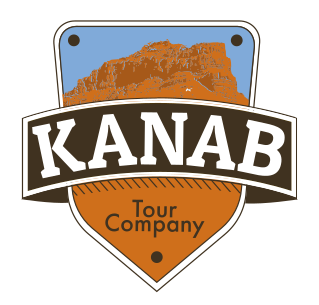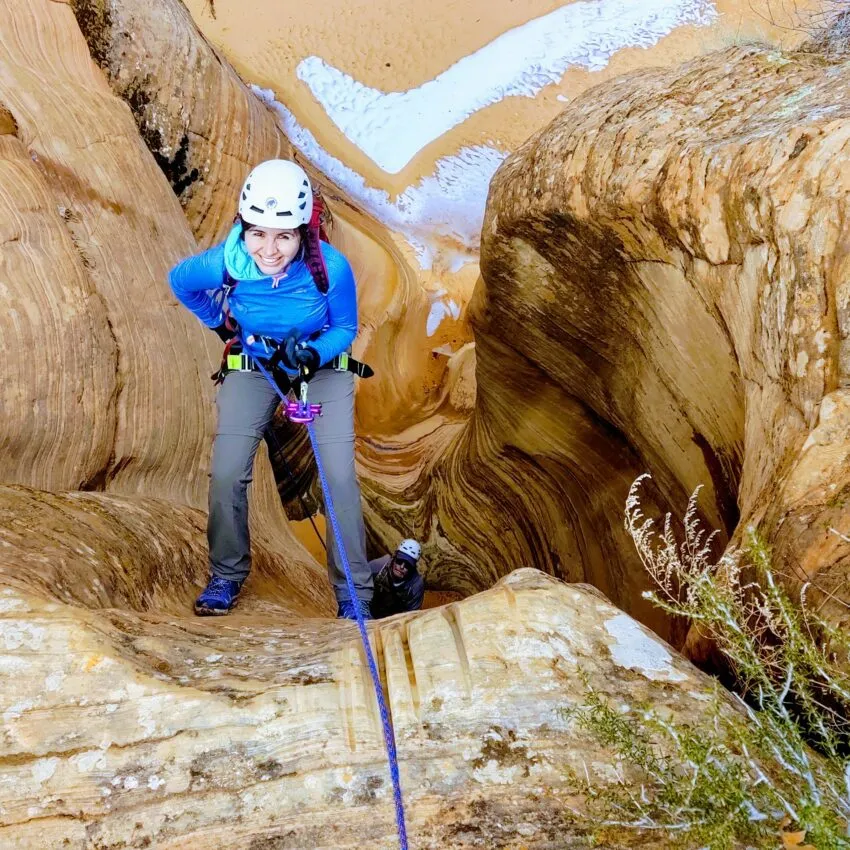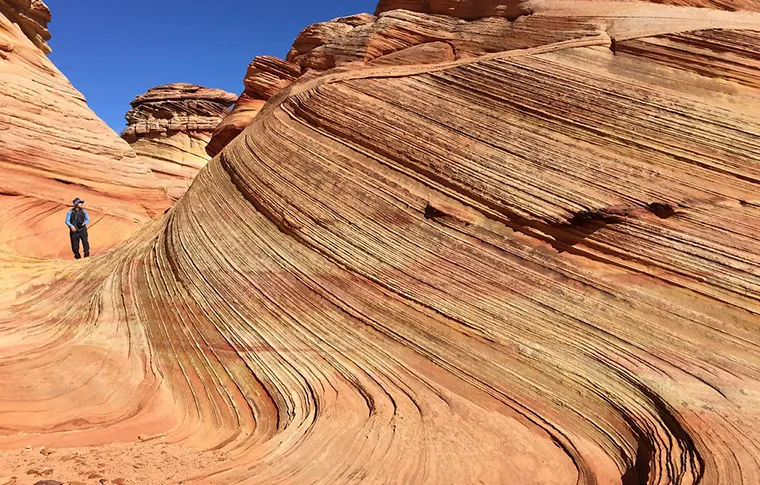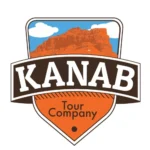What is Canyoneering?
Imagine descending into a narrow canyon just wide enough for your shoulders, where golden sandstone walls rise like cathedral spires. That’s canyoneering in Southern Utah.
Canyoneering blends hiking, climbing, rappelling, and wading or swimming through some of nature’s most unique landscapes: narrow slot canyons carved by centuries of flash floods and time. Southern Utah is considered the canyoneering capital of the U.S., thanks to its world-famous sandstone canyons, natural arches, and winding labyrinths near Kanab, Zion, and beyond. Whether you’re a first-timer or a curious adventurer, canyoneering promises excitement, challenge, and unforgettable scenery.
Popular Beginner-Friendly Canyons Near Kanab
Southern Utah’s canyons range from easy, scenic walks to expert-level, rope-intensive adventures. For beginners, some of the most inviting and safe options near Kanab include:
- Peekaboo Canyon: Wide-open, photogenic, and non-technical (no ropes required), ideal for getting a slot canyon experience with little risk.
- Diana’s Throne: Gentle rappels on fixed ropes, fun obstacles, and short approaches—a perfect intro tour for first-timers.
- Red Canyon (aka Peek-a-Boo Slot): Distinct from Peekaboo near Escalante, this narrow, winding slot’s sculpted sandstone makes for fun scrambling and stunning photos.
- Cutler Point (East Fork): Offers optional rappels, small pools, and truly classic scenery, often run as a guided adventure.
Ready to get started? Explore our guided canyoneering tours near Kanab for all skill levels.
Essential Gear Checklist
Canyoneering requires some specialized equipment for both safety and enjoyment—especially in narrow, abrasive, and wet slot canyons.
Helmets and Harnesses
- 🧗♂️Always wear a climbing-certified helmet to protect against rockfall or slips.
- Use a padded, adjustable harness for rappelling to ensure comfort and safety.
Ropes and Anchors
- Dynamic or static canyoneering ropes are essential for rappelling and ascending.
- Guided tours provide certified ropes and anchor systems; if going independently, ensure anchors are safely installed and backed up.
- Pack a belay device and carabiners; never use frayed or damaged gear.
Dry Bags
- Waterproof bags keep snacks, first aid, electronics, and layers safe from water and sand. Multiple smaller bags are easier to stuff in a pack and fit through tight spots.
Other recommended essentials:
Tough shoes with sticky soles, quick-dry and abrasion-resistant clothing, gloves (for rappelling), sun protection (hat, sunscreen), plenty of water, snacks, a map or GPS, a headlamp, and a small first aid kit.
Don’t have your own gear? See our high-quality equipment rentals for everything you’ll need.
Booking a Guided Canyoneering Tour
If you’re new to canyoneering, guided tours offer the safest, most enjoyable way to experience the sport—especially in complex or technical canyons. Benefits include:
- All safety gear provided and professionally inspected
- Certified guides teaching proper technique and canyon etiquette
- Instant route knowledge (avoiding navigation challenges)
- Local expertise on geology, history, and wildlife
- Safety in numbers, shared adventure, and support for nervous first-timers
For a memorable first adventure, check out our trusted Kanab canyoneering guided tours.
Physical Preparation and Fitness
You don’t need to be an elite athlete, but a moderate fitness level makes canyoneering more comfortable and safer. Be ready for:
- Steep hikes, uneven scrambling, and climbing over rocks
- Descending and ascending ropes
- Balancing through water or loose sand
- Carrying gear for several hours
Preparation tips:
- Practice hikes on uneven terrain with a loaded backpack
- Core and leg strength training
- Try indoor rock climbing for basic movement confidence
Basic Safety Rules and Practices
- Never canyoneer alone. Always go with a partner or group.
- Check the weather forecast. Avoid canyons if rain is possible anywhere in the region—flash floods are deadly.
- Leave a trip plan with someone not on your adventure: destination, group names, emergency contacts, and return time.
- Practice safe rappelling—double-check knots and harnesses.
- Be prepared for possible cold, water, or standing pools (even in hot weather).
- Stay on established routes and use existing anchors when possible.
- Know your own limits—skip features you aren’t comfortable with.
Explore beginner techniques and safety advice at Canyoneering USA and the Outdoor Project’s beginner’s guide.
Environmental Considerations
- Protect cryptobiotic soil—crunchy black soil patches are alive! Step only on rock or sand to avoid destroying desert life.
- Pack out all trash, including organic waste (fruit peels, TP, etc.).
- Never carve or write on canyon walls.
- Respect wildlife—don’t disturb nests, dens, or habitats.
- Anchor only where permitted; use natural features whenever possible to minimize impact.
For the latest on regulations and closures, check with the BLM Kanab office before your trip.
What to Expect on Your First Trip
- Excitement and challenge: Slot canyons are thrilling, beautiful, and humbling—sometimes claustrophobic, often exhilarating.
- Anticipate a lot of sand, some scrambling, wading or short swims, and cool, shaded passageways.
- Guides will demonstrate all rope techniques, help you fit gear, and cheer first-time rappellers.
- Most beginner tours avoid deep water and high technical difficulty but expect to get a bit dirty!
- You’ll leave feeling confident—and ready for more advanced challenges.
Frequently Asked Questions (FAQ):
Yes, especially on professionally guided tours in beginner-friendly slots. Guides provide all equipment, training, and support to build your confidence.
Spring and fall offer the most comfortable conditions. Summer is possible, but starts very early. Avoid if storms are in the forecast.
Not for beginner tours—just bring reasonable fitness and a sense of adventure! All rope/anchor techniques are taught on-site.
Quick-dry clothes, sticky-soled approach shoes, sun protection, and layers for changing temps. No cotton or heavy materials.
Many beginner canyons are accessible to families with kids as young as 8–10, but always check minimum age and fitness requirements with your guide.
Most guided trips in Kanab run 3–6 hours, including instruction, hiking, and snack breaks.
No, always start with a guide or experienced partner. Navigation, anchors, and weather can be complex and risky solo.
Conclusion
Canyoneering in Southern Utah is a gateway to some of the world’s most stunning slot canyons—an adventure best approached with respect, preparation, and the right support. Whether you’re stepping into your first canyon with friends or booking a pro-led course, following these safety and gear tips is your path to a safe, confidence-building experience.
Ready to try canyoneering?
Book an unforgettable guided canyoneering tour from Kanab, gear up with top-quality rentals, or learn more about our team and local expertise at About Us.
Written by:
Tiffany Unsworth




